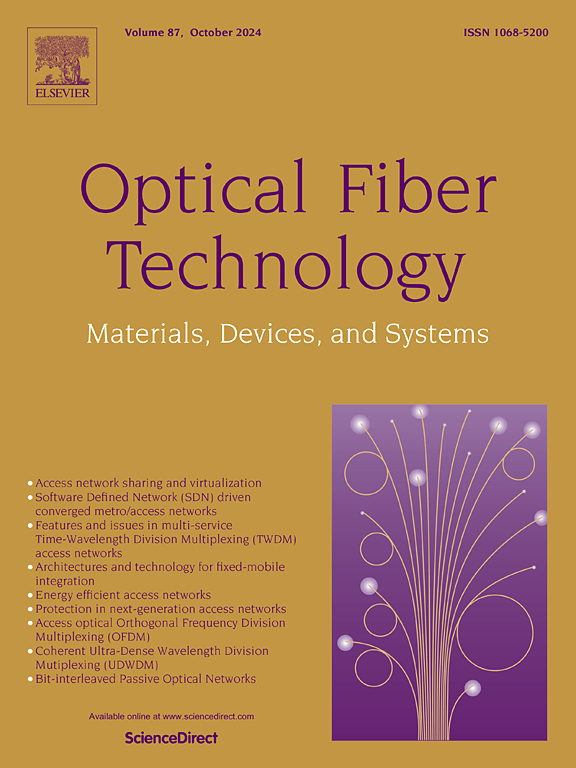Investigation of suppressing ASE in all-fiber TDFA by modulating MI from seed and realization of a 2043 nm, 45 dB, 1 mJ amplifier with single-stage structure
IF 2.6
3区 计算机科学
Q2 ENGINEERING, ELECTRICAL & ELECTRONIC
引用次数: 0
Abstract
As one of the most critical applications, high peak power, all-fiberized nanosecond Tm-doped fiber amplifiers (TDFA) are extensively used as the pump source for ZnGeP2 optical parametric oscillator (ZGP-OPO) system due to their compact structure and flexibility. However, amplified spontaneous emission (ASE) and modulation instability (MI) are the main constraints on the power scaling of nanosecond TDFAs. In this work, a method of modulating the content of the MI from the seed is proposed to suppress the ASE in the 2043 nm amplifier. Experimental observations indicate that with consistent MI noise content in the seed spectrum, an increase in the seed laser power correlates with stronger ASE in the amplifier. To address this, reducing the fiber link length before the main amplifier is conducted to enhance the spectral purity of the seed laser rather than its power, thereby effectively mitigating ASE and MI in the amplifier. The authors simplified and designed a single-stage amplification configuration that employs a high spectral purity seed laser to verify this approach. The single-stage 2043 nm amplifier achieved pulsed output with 186 ns pulse width and 1 mJ energy at a 50 kHz repetition rate. The signal-to-noise ratio (SNR) is more than 45 dB. Compared to the two-stage amplifier with higher seed laser power, the single-stage amplifier exhibits a similar slope efficiency, and shows an improvement of 3 dB in the signal-to-ASE noise ratio (SANR) and 10 dB in the signal-to-MI noise ratio (SMNR) at maximum output. This novel ASE suppression approach potentially facilitates the achievement of high energy and SNR output in nanosecond TDFAs using a compact all-fiber configuration.
求助全文
约1分钟内获得全文
求助全文
来源期刊

Optical Fiber Technology
工程技术-电信学
CiteScore
4.80
自引率
11.10%
发文量
327
审稿时长
63 days
期刊介绍:
Innovations in optical fiber technology are revolutionizing world communications. Newly developed fiber amplifiers allow for direct transmission of high-speed signals over transcontinental distances without the need for electronic regeneration. Optical fibers find new applications in data processing. The impact of fiber materials, devices, and systems on communications in the coming decades will create an abundance of primary literature and the need for up-to-date reviews.
Optical Fiber Technology: Materials, Devices, and Systems is a new cutting-edge journal designed to fill a need in this rapidly evolving field for speedy publication of regular length papers. Both theoretical and experimental papers on fiber materials, devices, and system performance evaluation and measurements are eligible, with emphasis on practical applications.
 求助内容:
求助内容: 应助结果提醒方式:
应助结果提醒方式:


